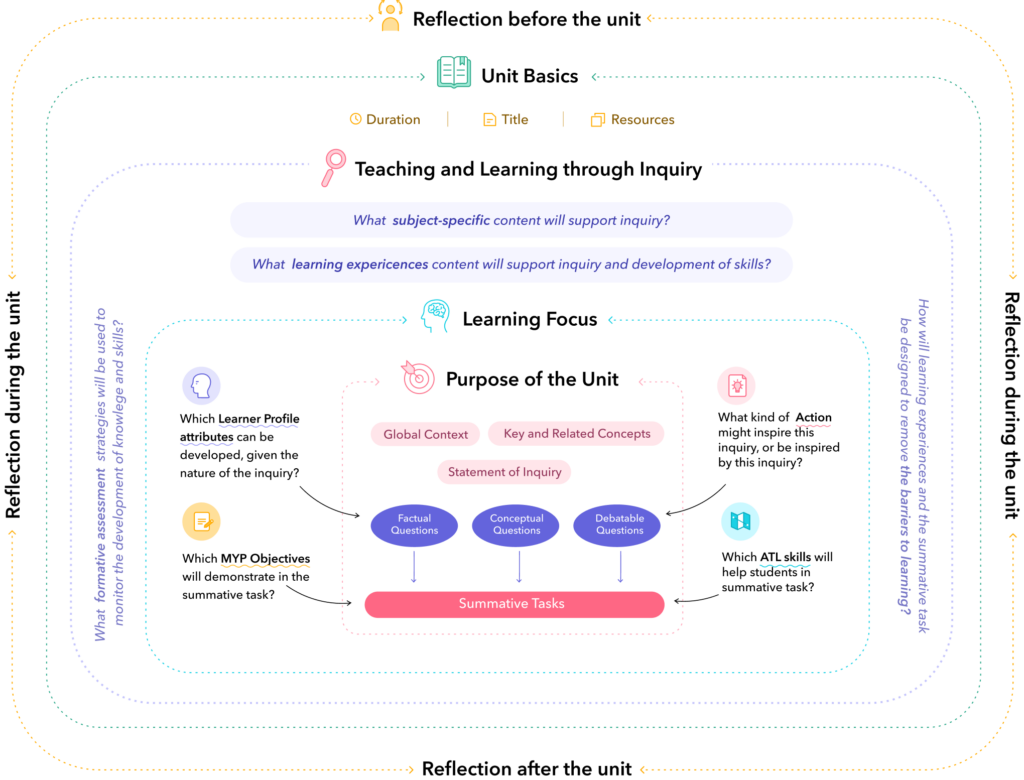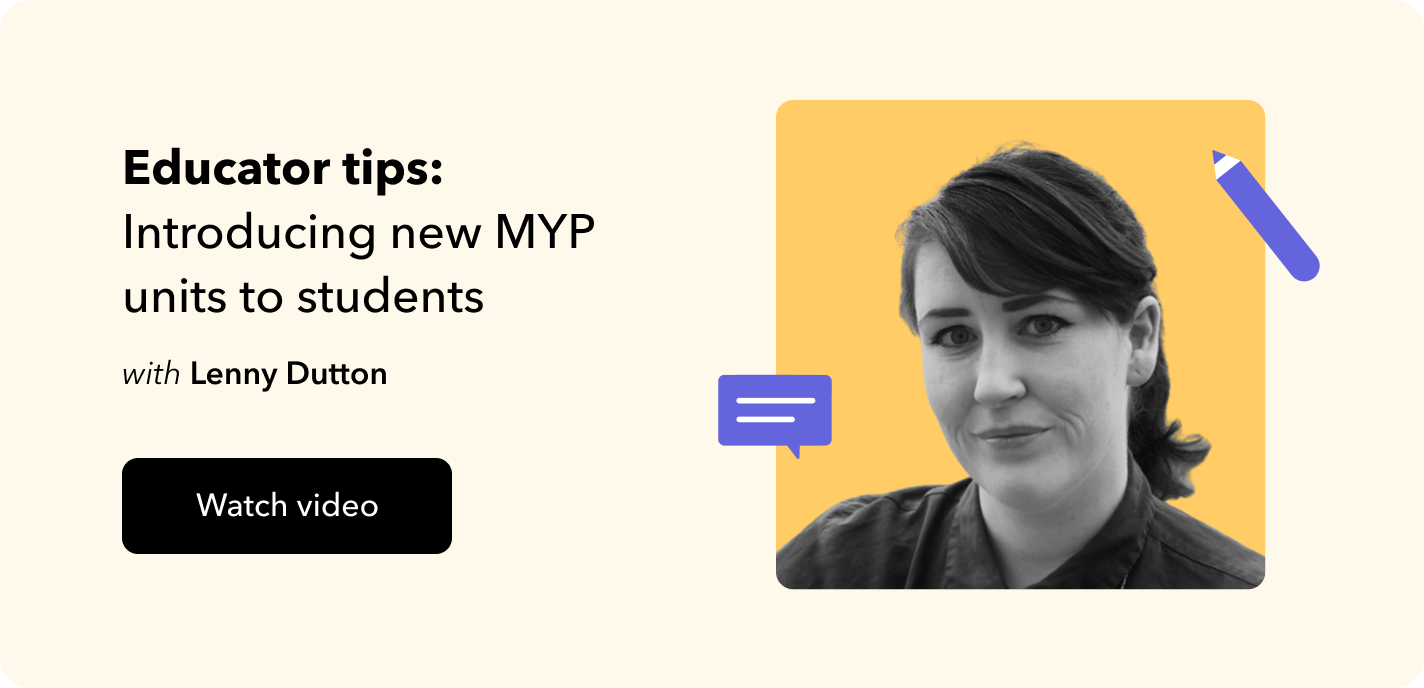Elements of an MYP unit planner
Unit planning is a highly personal journey for all educators. In the MYP, the unit plan is often where this journey gets captured. Let’s dive into this by first getting to grips with central features of MYP unit planning, as defined by the IB, which are:
- establishing the purpose of the unit;
- defining the process of teaching and learning through inquiry, and;
- reflecting on the planning, process and impact of the inquiry.
The different sections of the MYP unit planner are arranged according to the backward design model. Backward planning involves determining where we want to arrive, and working strategically from there to figure out what has to be done to get there. The figure below should help you visualise how these three different aspects of planning – inquiry, action, and reflection – come together, and are interconnected.

Each part of the unit planner is a layer that supports the central purpose of the unit. Each of these parts are connected with one another, and can serve as the starting point for a unit; unit planning is not necessarily a linear process. Teachers can start with an assessment, a global context exploration, an important skill, or a previous reflection, and keep moving between the different parts as you plan. Using any of these starting points, teachers can further develop their ideas to design guided inquiries that are built around conceptual understandings, and accommodate different global and local contexts.
We’ve put together some resources you might find useful as you build your MYP units, or want to introduce them to your students.






